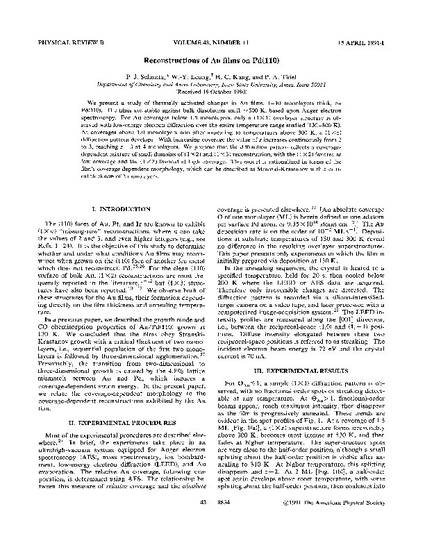
We present a study of thermally activated changes in Au films, 1–10 monolayers thick, on Pd(110). The films are stable against bulk dissolution until ∼500 K, based upon Auger electron spectroscopy. For Au coverages below 1.5 monolayers, only a (1×1) overlayer structure is observed with low-energy electron diffraction over the entire temperature range studied (130–800 K). At coverages above 1.0 monolayers and after annealing to temperatures above 300 K, a (1×z) diffraction pattern develops. With increasing coverage the value of z increases continuously from 2 to 3, reaching z=3 at 4 monolayers. We propose that the diffraction pattern reflects a coverage-dependent mixture of small domains of (1×2) and (1×3) reconstruction, with the (1×2) favored at low coverage and the (1×3) favored at high coverage. This model is rationalized in terms of the film’s coverage-dependent morphology, which can be described as Stranski-Krastanov with a critical thickness of 2 monolayers.
Available at: http://works.bepress.com/patricia_thiel/81/

This article is from Physical Review B 43, no. 11 (1991): 8834–8840, doi:10.1103/PhysRevB.43.8834.